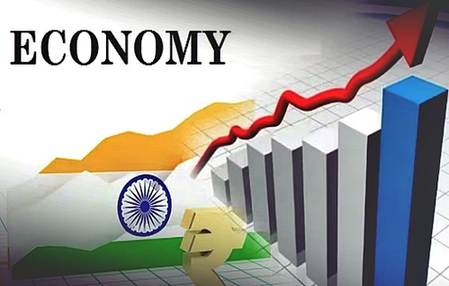New Delhi, 19 May (IANS). India has emerged as a ray of hope at a time when the United Nations report described the current era of the global economy as an indefinite moment.
According to the WESP’s half -yearly report, the Indian economy is expected to grow at a rate of 6.3 percent in the current financial year, which is the highest among all major economies. With this, this pace is expected to continue in 2026, which is estimated to be 6.4 percent.
In contrast, the global approach remains slow amid growing trade stress, policy uncertainty and declining border investment.
The report said that the global economic growth rate is now estimated to be 2.4 percent in 2025, less than 2.9 percent in 2024 and 0.4 percent less than the January forecast.
Amidst global challenges, India stands not only for its major development figures but also for the depth of its progress, including rapidly growing capital markets and strong manufacturing to record breaking exports and rapidly growing defense sector.
These benefits are vested in solid policy options, strong domestic demand and increasing global belief in India’s economic trajectory.
The report released in mid -2025 updates the earlier world economic status and possibilities on 2025, which was revealed on January 9, 2025.
It has been prepared by the Global Economic Monitoring Division within the Economic Analysis and Policy Division of the Department of Economic and Social Affairs of the United Nations (DESA).
India’s growth is associated with strong domestic demand and constant government expenditure. These factors have strengthened stable employment and helped control inflation, which is expected to fall to 4.3 percent in 2025, within the RBI target limits. Financial markets are also optimistic, where there has been a great increase in share indices due to continuous confidence of investors.
Manufacturing activity is increasing with the help of favorable policies and strong external demand. Exports, especially in strategic areas such as defense production, are continuously increasing. Together, these indicators show that India’s economy is not only strong, but is also moving forward in an uncertain global environment. India’s capital markets have played an important role in accelerating economic growth.
India’s capital markets have strengthened the financial system by converting domestic savings into investment. By December 2024, the stock market reached a record high. Despite geopolitical stress and domestic uncertainties, it performed better than many emerging markets.
The primary market has also been equally active. This strong market has attracted multinational companies like Hyundai and LG to list its local subsidiaries in India. This change indicates that India is now not just a market but a strategic partner in global financial ecosystem.
India’s manufacturing sector has recorded impressive growth in the last decade. According to the National Account Statics of the Ministry of Statistics and Program Implementation, the gross value added (GVA) of manufacturing on stable prices has almost doubled, which has increased from Rs 15.6 lakh crore in 2013-14 to Rs 27.5 lakh crore in 2023-24.
India’s total exports reached $ 824.9 billion in 2024-25, which is 6.01 percent more than $ 778.1 billion in 2023-24. It is a significant leap from $ 466.22 billion in 2013-14, which reflects continuous growth in the last decade.
India’s defense production touched a new milestone in FY 2023-24, with the price of indigenous manufacturing increased to Rs 1,27,434 crore. It shows a great growth of 174 percent in 2014-15 as compared to Rs 46,429 crore.
The country’s defense exports have also seen an extraordinary increase. In 2013-14, exports increased to Rs 23,622 crore in 2024-25 due to minor exports of Rs 686 crore. This is 34 times the increase in compared to the previous decade. Indian defense products are now being sent to about 100 countries, which reflects India’s growing reputation as a global supplier of strategic defense equipment.
-IANS
SKT/AS






